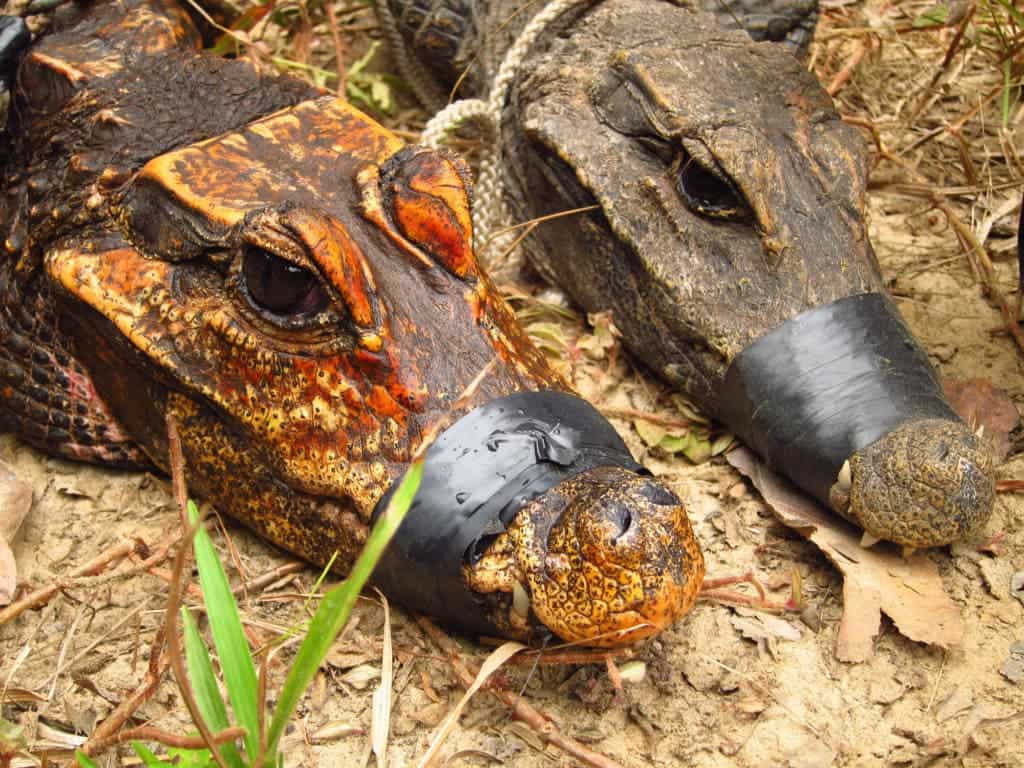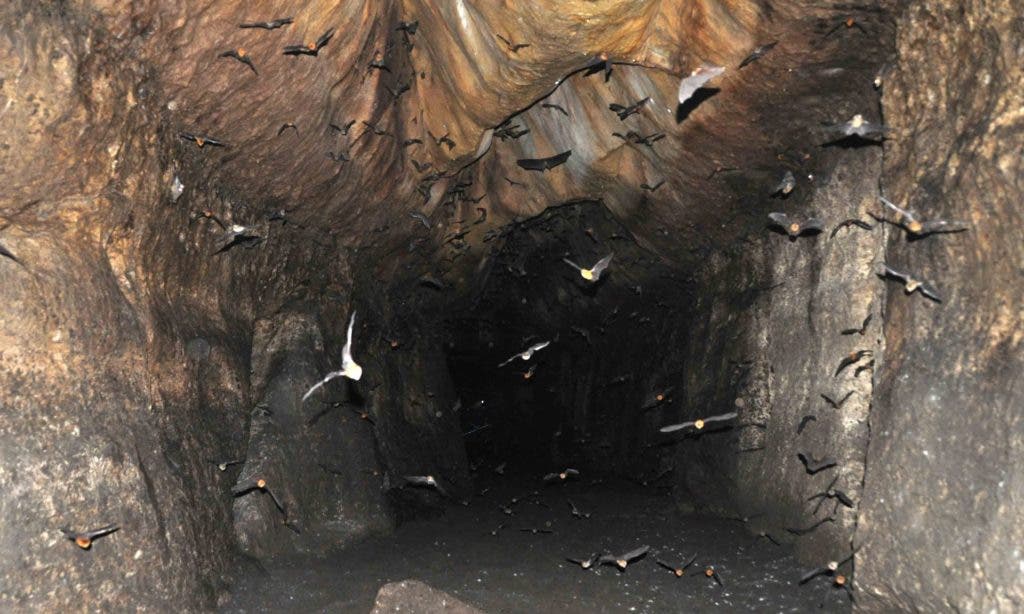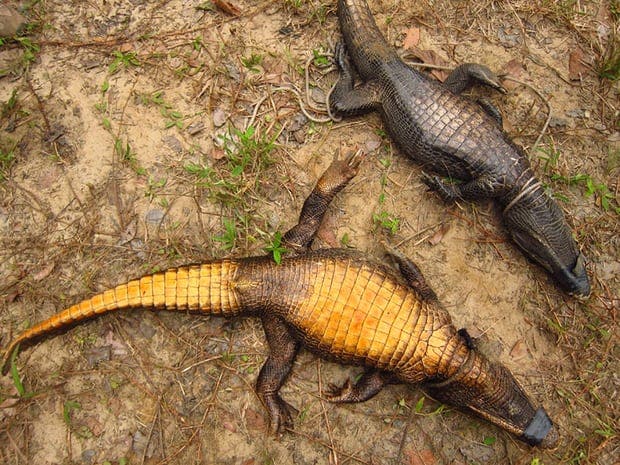Scientists are witnessing how an isolated habitat is turning a population of cave-dwelling African dwarf crocodiles into a new species.

Side-by-side comparison between cave-dwelling (left) and surface-dwelling African dwarf crocodiles. Credit: Olivier Testa.
Inside the Abanda caves in Gabon, Africa, an unusual population of African dwarf crocs (Osteolaemus tetraspis) will eventually become an entirely separate species. Because they’re living in an isolated habitat, these cave-dwelling crocs are passing unique sets of genes to their offspring, all descending from one very successful individual.
“As a result of that isolation and the fact that few individuals come in or go out, they’re in the process of [becoming] a new species,” said Matthew Shirley, a researcher studying the crocodiles and co-author of the paper. “Whether that happens soon or not is anyone’s guess.”
The animals were first discovered by Richard Oslisly, an archaeologist who was exploring the cave in 2008. Two years later, Oslisly, along with Shirley and Oliver Testa, a cave scientist, captured the first specimen on which they carried out tests. They drew blood from dozens of crocs and then compared morphological and genetic specs with those living above ground. The data suggest that the cave-dwelling crocs split off from their outdoor relatives thousands of years ago.
Guano crocs

The entrance of the Abanda caves where you’re greeted by bats. Looks very welcoming. Credit: Olivier Testa.
From the beginning, the researchers knew something was way off about these crocs. For one, their appearance — orange and yellow skin rather than grey — was strikingly different from surface-dwelling dwarf African crocodiles.
The crocs owe this unusual coloring to somewhat gross circumstances — they swim in bat poop all day. The bat excrement, or guano to be more precise, forms a mud-like liquid on the cave’s floor, where the crocs prefer to linger. The sludge has a sort of tanning effect which turns the croc skin orange and yellow.
The reptiles aren’t particularly fond of the guano mud, but they endure it anyway to gain access to food — some of the tens of thousands of bats. They also don’t mind living in a cave at all, which might seem incongruent if you know a thing or two about crocs. Yes, crocodiles are ectotherms, meaning they require ambient heat to survive, which is why you’ll see videos of them basking in the sun. Inside the Abanda caves, however, temperatures always hover around a stable, comfy 22 degrees Celsius (71 degrees Fahrenheit). What’s more, both cave- and surface-dwelling crocs hunt in the dark, since the African dwarf croc is primarily nocturnal. And to top things off, there are no other predators inside the cave which could either threaten the crocs or compete with them for resources. Not even humans, who are too afraid to wander inside the cramped, dark and generally spooky caves.

The two types of crocs on their backs, for comparison. Credit: Olivier Testa.
Up to now, around 30 cave-dwelling crocs have been identified, most of which probably haven’t seen the light of day since they were juveniles and were able to creep outside through openings in the cave system.
It’s amazing to learn about how scientists are witnessing evolution right before their eyes. We don’t know when the Abanda population will transition into a novel species; it might take a couple of generations, perhaps even in the thousand-year range. But, for now, Oslisly is working with partners to make sure the caves are turned into a sanctuary, just to make sure these bizarre crocodiles are protected and actually get the chance to speciate.









